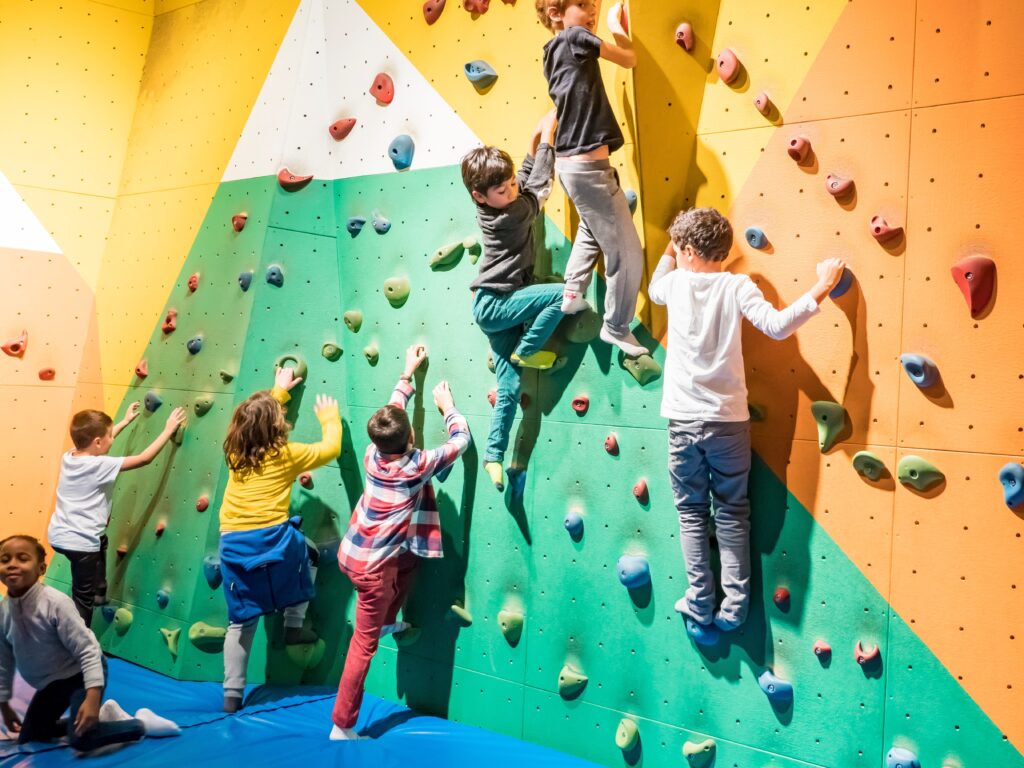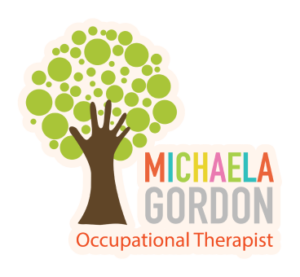What is Dyspraxia?
By Michaela Gordon, OTR/L

You most likely understand a therapist when they use the terms coordination, balance, and strength. However, do you understand the term praxis or dyspraxia?
Praxis can be broken down into three steps. Before a child can perform a motor action, two cognitive steps occur. The first cognitive step is ideation. Ideation is the ability to come up with new ideas for using your body and objects. In other words, is the child able to figure out what to do when they are presented with something new?
The second step is motor planning which involves planning out the sequence of motor steps to accomplish a task. Part of motor planning includes the timing of each step and getting the body into the various static and dynamic positions for each step moment by moment. In other words, now that the child has an idea of what they want to do, do they know how to put that idea into action in a timely and fluid way?
After these two cognitive steps have occurred there is then motor execution. Motor execution is the observable result of all these steps. In other words, was the child able to accomplish the task, and if so, was their performance within a range appropriate for their age?
The concept of praxis may be confusing for parents to understand if their child presents with high verbal skills or a vivid imagination but also presents with poor ideation in praxis. Ideation in praxis is specifically coming up with new ways to move or use the physical body in the physical world.
The other variable that may be difficult for parents to understand is the difference between praxis and motor patterns. The reason this can be hard to understand is because your child may be able to perform and even sometimes excel at one or more motor tasks i.e. riding a bike, or playing tennis, but then may not be able to perform a new motor task, even if that task is easier than the other tasks they excel at. Praxis requires focused attention in order to conceptualize and plan the novel task. The child’s level of praxis will not be revealed until the child engages in a novel task.
A motor skill (or a motor pattern) is a task that is familiar and has been repeated many times to the point that the motor pattern has become programmed into their muscle memory. When this happens, the child can perform those motor patterns automatically. For some children, if an element of a familiar task has been changed i.e. a longer rope, a smaller ball, someone else joins in, the task is done in a new environment etc., this may be enough novelty where praxis is needed and the child may have difficulty performing the task or may simply refuse to engage in the task.
One important contributor to the development of praxis is body scheme, which is a sensory-cognitive map of the physical self. Body scheme is developed through multisensory information with tactile and proprioceptive processing (sometimes referred to as somatosensory) being the biggest contributor to body scheme. Body scheme provides the child with physical safety to explore their environment, the ability to connect with the social world, to learn and develop motor skills, to refine movement, and influence regulation.
Issues with praxis may be referred to as motor planning issues or dyspraxia. Dyspraxia means difficulty with praxis even in the presence of normal intelligence and environmental opportunities. Somatodyspraxia means praxis issues that originate from issues with body scheme due to inefficient tactile and proprioceptive processing.
If praxis issues are present, it may take regular practice over a period of time to learn simple tasks and the child may need to re-learn the task on some level each time. Dyspraxia is easier to determine as occupational therapy services and programs are implemented since you often see this issue when the child is engaging in a novel task or engaging in tasks within a novel environment.
Dyspraxia can be addressed through sensory integration treatment and other sensory-based modalities.
Environmental and task modifications may need to be made at home and school to support the child while they build up their praxis skills. The child may also benefit from using cognitive strategies so they can better manage challenging tasks on their own. Lastly, engaging in a daily home program that supports the development of their sensory-motor skills is both important and helpful for long-term results.
